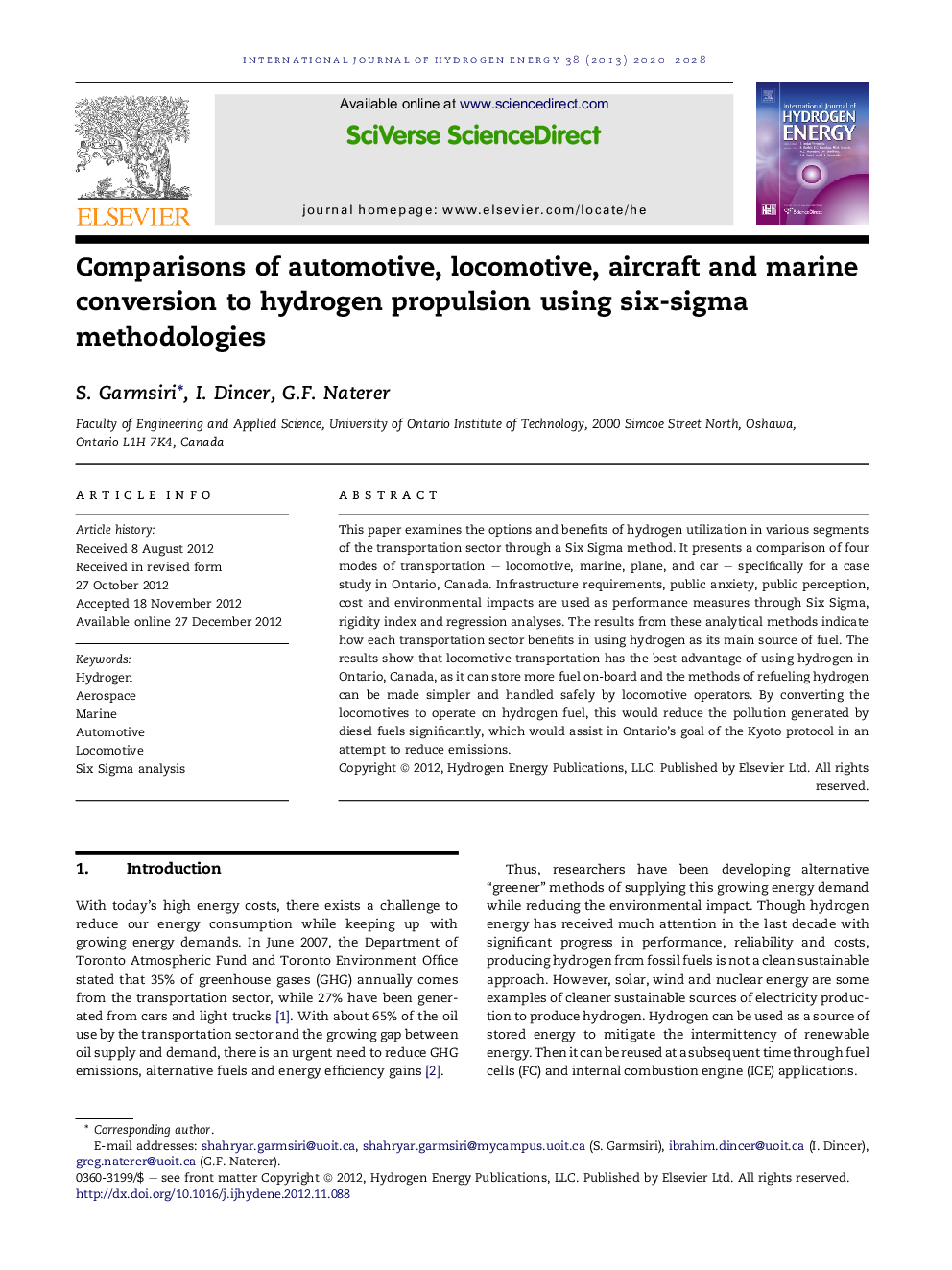| Article ID | Journal | Published Year | Pages | File Type |
|---|---|---|---|---|
| 1274066 | International Journal of Hydrogen Energy | 2013 | 9 Pages |
This paper examines the options and benefits of hydrogen utilization in various segments of the transportation sector through a Six Sigma method. It presents a comparison of four modes of transportation – locomotive, marine, plane, and car – specifically for a case study in Ontario, Canada. Infrastructure requirements, public anxiety, public perception, cost and environmental impacts are used as performance measures through Six Sigma, rigidity index and regression analyses. The results from these analytical methods indicate how each transportation sector benefits in using hydrogen as its main source of fuel. The results show that locomotive transportation has the best advantage of using hydrogen in Ontario, Canada, as it can store more fuel on-board and the methods of refueling hydrogen can be made simpler and handled safely by locomotive operators. By converting the locomotives to operate on hydrogen fuel, this would reduce the pollution generated by diesel fuels significantly, which would assist in Ontario's goal of the Kyoto protocol in an attempt to reduce emissions.
► Studying the hydrogen utilization options in Ontario transportation sector through six-sigma methodologies. ► Developing the model based on the parameters obtained from the assessment. ► Proposing the rigidity index for assessing the hydrogen utilization and making priorities. ► Evaluating the transport categories and making suggestions.
